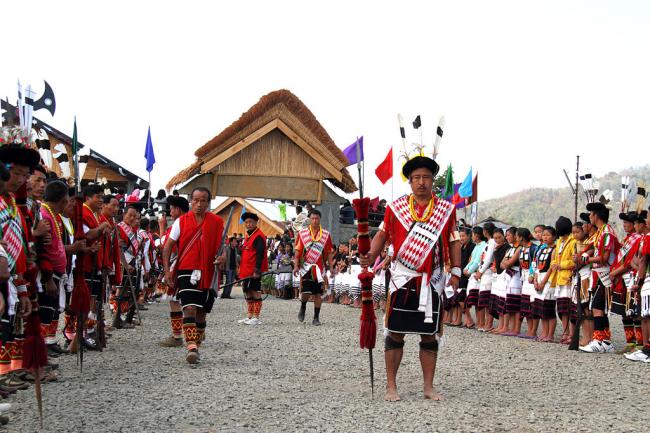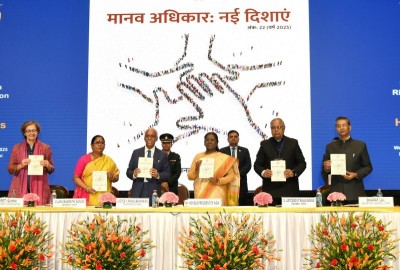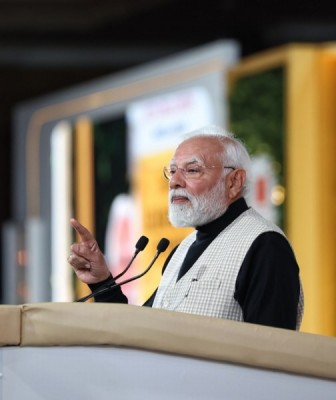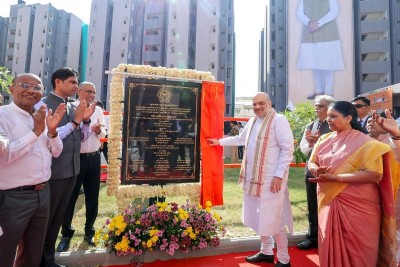
Nagaland: Enduring Troubles
On February 6, 2016, a young couple, identified as T. Alemba Sangtam and Naro, was killed in a shooting incident at Shamator in Tuensang District.
On February 2, 2016, one civilian, identified as Charlie Hangsing, was killed by unidentified assailants at a place in the Burma Camp in Dimapur District.
According to partial data compiled by the South Asia Terrorism Portal (SATP), Nagaland has already registered a total of four fatalities - three civilians and one militant in 2016 (data till March 18, 2016).
The relative peace achieved in Nagaland since 2012 has been vitiated, as insurgency-related fatalities surged through 2015. According to the SATP database, the State recorded a total of 46 fatalities, including 14 civilians, nine Security Force (SF) personnel and 23 militants in 2015; as compared to 15 fatalities in 2014, including 11 civilians and four militants; a surge of 206.66 per cent. This is the highest number of civilian fatalities recorded in the State since 2008, when 42 civilians were killed. Significantly, after a high of 42 fatalities in 2008, civilian fatalities had come down to seven in 2009 and fell to zero in 2010. Seven civilian fatalities were recorded in 2011 and six in 2012, but have since been rising, with 11 in 2013; 11 in 2014; and 14 in 2015.
More worryingly, after a hiatus of seven years, Nagaland recorded SF fatalities again. The State had recorded two SF fatalities in 2008. The last of these was on May 11, 2008, when the Police recovered the body of an Indian Reserve Battalion (IRB) trooper between the Keyive and Heningkunglwa areas under Peren District. Earlier, on April 25, 2008, Isak-Muivah faction of National Socialist Council of Nagaland (NSCN-IM) cadres had killed an IRB trooper at Diphupar village in Dimapur town.
Nine SF fatalities were recorded in 2015, the highest number since 1998, when 14 SF personnel were killed. In a positive, however, SFs also managed to eliminate at least 19 militants in direct exchanges of fire in 2015, as against just three in 2014. Significantly, out of the 23 militants killed in 2015, four were killed in internecine clashes; and of the four militants killed in 2014, three were killed in internecine clashes. The SFs also arrested 171 militants in 92 incidents during 2015, adding to the 165 arrested in 95 incidents in 2014.
In 2015, killings were reported from eight of Nagaland's 11 Districts - Tuensang (14), Mon (11), Dimapur (7), Zunheboto (5), Phek (4), Kohima (2), Mokokchung (2) and Wokha (1) - as against five Districts in 2014. In 2014, these included Dimapur (9), Phek (2), Mon (1), Mokokchung (1) in common with 2015, as well as Kiphire (1), while one person succumbed to his injuries in Shillong Hospital in Meghalaya, though the incident occurred in Zunheboto.
The fratricidal rivalry among the Nagas in Nagaland, which has persisted since the formation of the NSCN-K and NSCN-IM following the split of the original Nationalist Socialist Council of Nagaland (NSCN) on April 30, 1988, registered a marginal escalation in 2015. Six such incidents, resulting in four deaths and one injury, were reported in 2015; as against four incidents in 2014, resulting in three deaths and four injuries. The Naga groups also fight among themselves outside Nagaland. In 2015, nine such incidents resulting in 11 deaths and six injuries were recorded, as against five such incidents resulting in three deaths and two injuries in 2014.
In a related development, a new Naga outfit called Eastern Naga National Government (ENNG) was founded on January 14, 2016. The armed wing of the outfit, Eastern Naga Independent Army (ENIA), has been raised to challenge NSCN-K. It has declared the areas under its purported influence - apparently in the Districts of Tirap, Changlang and Longding in Arunachal Pradesh - as a 'Peace Zone', with its 'vision statement' declaring that no activities, including military and social, that are inimical to the Naga cause would be tolerated there. The 'peace zone' would be defended by its armed wing ENIA.
Various other parameters of violence, including explosions, abductions and extortions have also recorded some increases. The SATP database recorded 11 incidents of abduction [in which 15 people were abducted] in 2015, as against eight persons abducted in six such incidents in 2014. 24 incidents of extortion were also recorded in 2015, as against 10 reported in 2014. Reported incidents relating to both abduction and extortion are likely to be a fraction of the actual incidence of such crimes, as families of victims often settle with the abductors without reporting to the Police.
Six incidents of explosion, resulting in one fatality and 10 injuries, were recorded in 2015; as against six incidents registered in 2014 which had resulted in injuries to five persons.
The spike in insurgent activities was primarily due to the unilateral abrogation of ceasefire by the NSCN-K on March 27, 2015. The Press Release by NSCN-K 'chairman' S.S. Khaplang had declared, "Clamouring for peace without even an inclination to discuss sovereignty issue or resolution of sovereignty is only farce and any settlement or solution short of sovereignty would only be a betrayal of Nagas historical and political legacy." Subsequently, the Union Government also called off the agreement with NSCN-K in a statement released on April 28, 2015.
The ceasefire agreement with NSCN-K was signed on April 28, 2001. Significantly, of the 46 insurgency-related fatalities recorded in the State through 2015, NSCN-K was involved in 33. The outfit was responsible for seven out of 14 civilian killings in 2015, as well as in the killing of all nine SF personnel. In a major attack on May 3, 2015, NSCN-K militants killed eight SF personnel in an ambush in Mon District. One NSCN-K militant was also killed in the exchange of fire. Out of 19 militants killed by SFs in 2015, 17 belonged to NSCN-K.
Amidst this relative surge in violence, positive developments also continue in the State, limiting the scale of violence. Nagaland had recorded 360 fatalities (104 civilians, 38 SF personnel, 218 militants) at the peak of insurgency in 1997.
Apart from the "historic accord" of August 3, 2015, the Union Government on April 27, 2015, signed a ceasefire agreement with the breakaway Reformation (NSCN-R) faction of the NSCN-K, for one year. The modalities for the ceasefire with the NSCN-R are almost the same as those with other Naga groups. The area of ceasefire will be confined within the State of Nagaland in writing, but the outfit accepted that the Union Government had verbally agreed to extend the truce up to Arunachal Pradesh. NSCN-R was formed on April 6, 2015, after a split in NSCN-K.
Significantly, addressing the State Legislative Assembly on March 18, 2016, Nagaland Chief Minister (CM) T.R. Zeliang stated that the ongoing Naga political dialogue was between the Centre and the NSCN-IM and the State Government had no direct role, except as a facilitator. Informing the House that, as facilitator of the Naga peace process, the State Government met other Naga political groups on March 9, 2016, he added:
[It is] truly significant point of time that government is passing through without an opposition. The unique development is more the result of a mutual understanding among the members of the need to come together in one mind and one accord, and move single mindedly for a resolution of the long standing Naga political issue... We have all been working for a solution to the Naga political issue for so many years, and it would not be fair to waste this wonderful opportunity after it has reached our doorsteps. .
The CM asserted that the State Government would continue to be a facilitator in the talks and the final agreement that may follow.
The Chief Minister was referring to the 'historic accord' of August 3, 2015. A release issued by the Prime Minister's office on that date, had claimed that the Agreement would "end the oldest insurgency in the country. restore peace and pave the way for prosperity in the Northeast", that it made an "honourable settlement" possible", and that the "NSCN was represented by its entire collective leadership and senior leaders of various Naga tribes."
Though no timeframe for negotiation of the final agreement based on the "framework agreement" has been scheduled, NSCN-IM and Government of India (GoI) decided on January 20, 2016, to speed up the peace process by holding 'formal talks' twice a week.
Despite the difficulties with NSCN-K and the transient spike in violence, Nagaland continues to inch closer to peace in a process which has been dragging on for decades. The fundamentals of a settlement appear to be at hand, but turf wars between various militant factions, and conflicts over a division of the 'spoils of peace', appear to be preventing an enduring settlement.
Support Our Journalism
We cannot do without you.. your contribution supports unbiased journalism
IBNS is not driven by any ism- not wokeism, not racism, not skewed secularism, not hyper right-wing or left liberal ideals, nor by any hardline religious beliefs or hyper nationalism. We want to serve you good old objective news, as they are. We do not judge or preach. We let people decide for themselves. We only try to present factual and well-sourced news.







